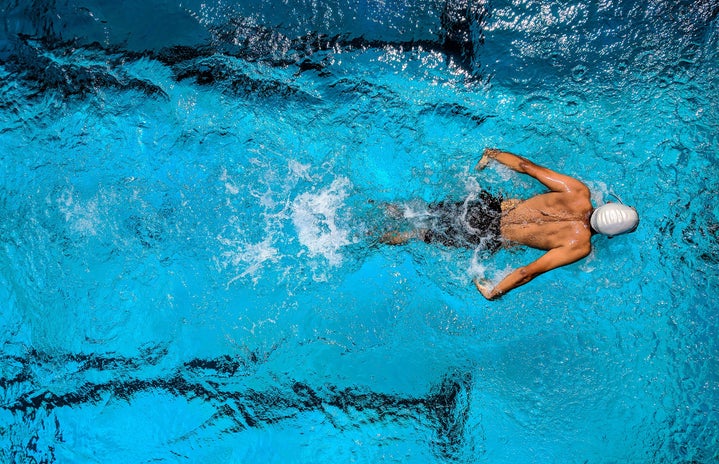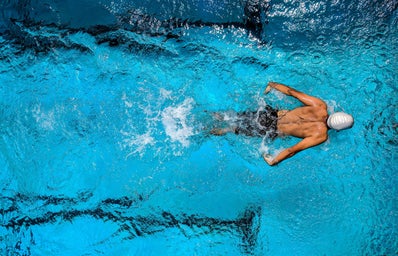This past summer, everyone was buzzing about the Olympics and the successes of American athletes. From Simone Biles and Jordan Chiles redeeming team USA in gymnastics, or Noah Lyles, Tara Davis-Woodhall and Sydney Mclaughlin’s exceptional wins on the track, African American excellence in sports was on display in Paris.
America places a lot of weight on sports and black athletes tend to carry most of that weight. In some of the most popular Olympic sports like gymnastics, football, basketball or track and field, the top performing American athlete is usually black. This is not a coincidence, and could be its own discussion. However, this is not the case for swimming.
As one of the most watched Olympic sports, American swimmers have been amongst the most successful of all time. Michael Phelps, Katie Ledecky, Ryan Lochte, Caeleb Dressel, Lilly King, the list of notable swimmers goes on. However, they are all white. It was not until 2016 at the Rio Olympic Games that Simone Manuel became the first African American female swimmer to win an individual gold medal. While not quite as recent, Anthony Nesty became the first African American male swimmer to win individual gold in 1988 for Suriname, only 30 years ago. Since then, only one other black swimmer has won Olympic gold, Cullen Jones in 2008 and 2012 who also became the first African American swimmer to hold a world record. This shocking lack of African American swimmers on the world stage is largely due to America’s dark past of racism and segregation.
There are a lot of stereotypes about black people’s ability to swim. According to USA Swimming and the University of Memphis, 70% of black people in America cannot swim compared to 31% of white people. This is not because of some obscure physiological difference. Historically, people of African descent have been very good at swimming, at times some of the best in the world. In West Africa, before the transatlantic slave trade swept through the region, people in the area were known to be exceptional swimmers, using the skill to hunt. However, as a result of slavery, swimming became nearly impossible as Africans brought to America were prohibited the freedom to enjoy such activities.
As the ability to swim dwindled amongst slave populations in America, it picked up popularity with the white elite. It became a popular pastime for the wealthy and with it, public swimming pools began opening across the country in the early 20th century. While slavery was abolished at this point, Jim Crow laws and segregation were still very much alive. Public pools were often not open to Black people, and if they were, they were only open at odd times, which usually prevented Black people from using them. Violence and terror was also used by white people to keep black people out of “their” pools. In 1964 in St. Augustine for example, civil rights activists staged a “swim in” to protest the segregation of pools. The pool owner, James Brock, then proceeded to pour acid into the pool to get the protestors out. While the Civil Rights Act passed in Congress the very next day, black people’s access to pools actually declined.
Radicalized by baseless racist claims, many white owners of pools closed or privatized them in order to keep black people out, who they saw as dirty. There also was a long history of drowning in the black community due to improper swimming education and a lack of access to safe bodies of water. All these factors have led to a continued decrease in the percentage of black people who can swim. As the divide grew larger, it became an accepted fact that swimming was not for black people, even when public opinion changed and black people had more access to pools. Understandably, this violent and racist history has been passed down through generations and is still taught to young black children that swimming is not safe. As mentioned earlier, these effects can clearly be seen in the sport of swimming and in drowning statistics in America. Only 5% of USA Swimming members are Black or Latino and only two African Americans represented the USA at the Olympics this year out of 46 total swimmers. Among kids aged 5 to 19, the rate of drowning is 5.5 times higher among black people.
While there are many initiatives currently working to change this disparity, a lot of work needs to be done in order to correct it. Education about our past and the reality of the situation is essential for both black people and others involved in the sport of swimming. If everyone can acknowledge the implicit bias and genuine fears some may have, we can better work together to make swimming a more inclusive sport, so that black people can rise like their counterparts in the sport.


